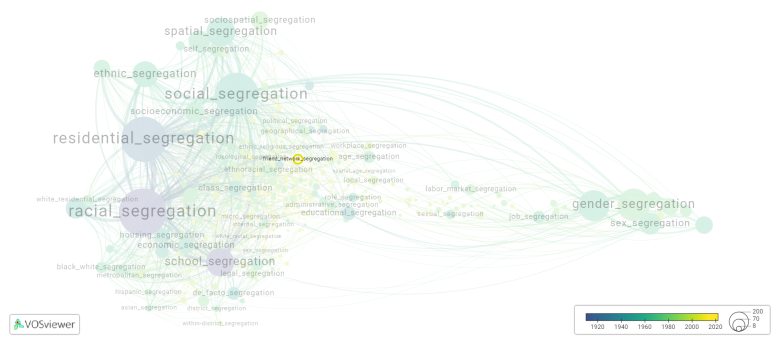Friend network segregation: Difference between revisions
(Creating page) |
(Creating page) |
||
| (3 intermediate revisions by the same user not shown) | |||
| Line 14: | Line 14: | ||
Addressing friend network segregation requires efforts to promote diversity, inclusivity, and cross-cultural interactions. This can be achieved through initiatives such as creating opportunities for individuals from different backgrounds to interact, fostering dialogue and understanding between different communities, and promoting diversity in various social settings. | Addressing friend network segregation requires efforts to promote diversity, inclusivity, and cross-cultural interactions. This can be achieved through initiatives such as creating opportunities for individuals from different backgrounds to interact, fostering dialogue and understanding between different communities, and promoting diversity in various social settings. | ||
==See also== | ==See also== | ||
==Related segregation forms== | |||
Friend network segregation is frequently discussed in the literature with the following segregation forms: | |||
[[social segregation]], [[spatial segregation]] | |||
[[File:friend_network_segregation.png|780x780px]] | |||
This visualization is based on the study [[Segregation_Wiki:About| The Multidisciplinary Landscape of Segregation Research]]. | |||
For the complete network of interrelated segregation forms, please refer to: | |||
* [https://tinyurl.com/2235lkhw First year of publication] | |||
* [https://tinyurl.com/2d8wg5n3 Louvain clusters] | |||
* [https://tinyurl.com/223udk5r Betweenness centrality] | |||
* [https://tinyurl.com/244d8unz Disciplines in which segregation forms first emerged (Scopus database).] | |||
==References== | ==References== | ||
==Notes== | ==Notes== | ||
Latest revision as of 07:17, 16 October 2024
Date and country of first publication[1][edit | edit source]
2021
United States
Definition[edit | edit source]
Friend network segregation refers to the phenomenon where individuals tend to associate and interact more frequently with others who are similar or share similar characteristics. This can occur along various dimensions, such as race, ethnicity, social class, education level, religion, or shared interests.
One possible reason for friend network segregation is the tendency of individuals to feel more comfortable and at ease when surrounded by others who are similar to them. People often seek out others who have similar values, beliefs, and experiences, as it can create a sense of belonging and understanding.
Friend network segregation can also be influenced by social norms and societal structures. In some cases, certain communities or neighborhoods may be more homogeneous due to historical, geographical, or economic factors. This can lead to the formation of friend networks that are segregated along various dimensions.
The consequences of friend network segregation can be both positive and negative. On one hand, having a close-knit network of similar individuals can provide emotional support, shared experiences, and a sense of belonging. On the other hand, it can also perpetuate stereotypes, limit exposure to diverse perspectives, and reinforce social divisions.
Addressing friend network segregation requires efforts to promote diversity, inclusivity, and cross-cultural interactions. This can be achieved through initiatives such as creating opportunities for individuals from different backgrounds to interact, fostering dialogue and understanding between different communities, and promoting diversity in various social settings.
See also[edit | edit source]
Related segregation forms[edit | edit source]
Friend network segregation is frequently discussed in the literature with the following segregation forms:
social segregation, spatial segregation

This visualization is based on the study The Multidisciplinary Landscape of Segregation Research.
For the complete network of interrelated segregation forms, please refer to:
References[edit | edit source]
Notes[edit | edit source]
- ↑ Date and country of first publication as informed by the Scopus database (December 2023).
At its current state, this definition has been generated by a Large Language Model (LLM) so far without review by an independent researcher or a member of the curating team of segregation experts that keep the Segregation Wiki online. While we strive for accuracy, we cannot guarantee its reliability, completeness and timeliness. Please use this content with caution and verify information as needed. Also, feel free to improve on the definition as you see fit, including the use of references and other informational resources. We value your input in enhancing the quality and accuracy of the definitions of segregation forms collectively offered in the Segregation Wiki ©.
Friend network segregation appears in the following literature[edit | edit source]
Fletcher J., Han J.K. (2021). High schools and intergenerational mobility. Research in Social Stratification and Mobility, 76(), -. Emerald Group Holdings Ltd..https://doi.org/10.1016/j.rssm.2021.100621
